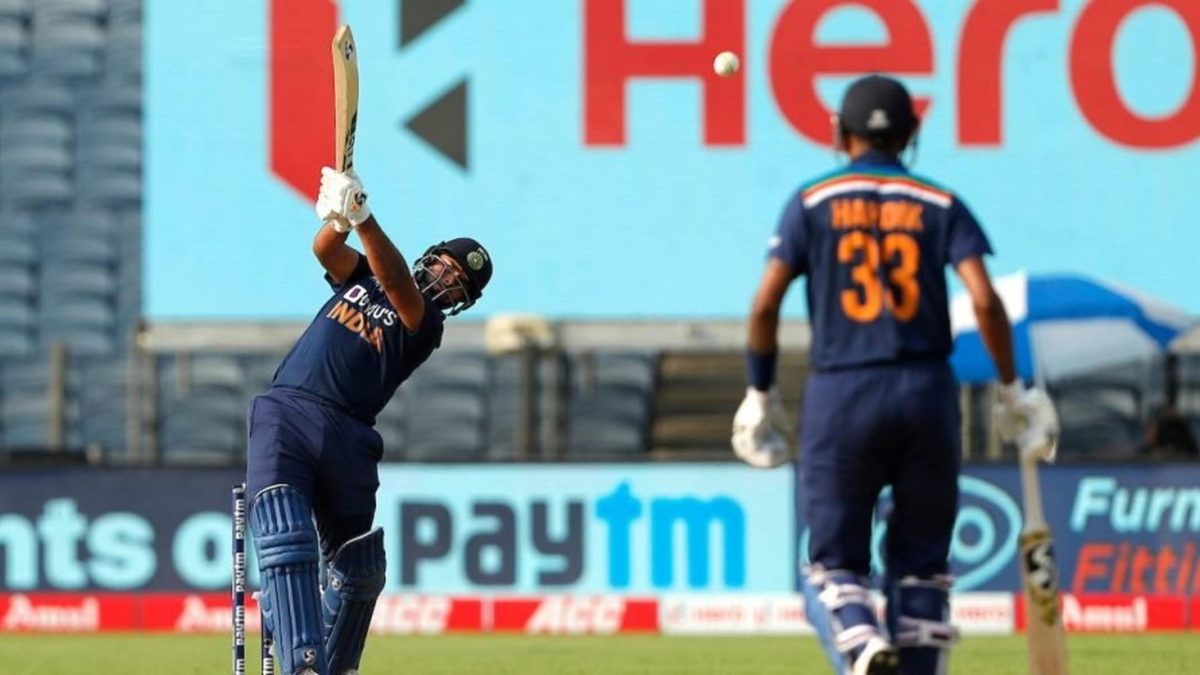
India showed glimpses of moving towards a more snazzy batting approach in the ODI series against England, and for all we know, it could well be better than England’s in the long run, writes Rohit Sankar.
Subscribe to the Wisden Cricket YouTube channel for post-match awards, player interviews, analysis and much more.
Twice in the recent series against England and four times in the six ODIs since the tour of Australia, India found themselves four down with a score of less than 200 on board, but went on to make more than 300, winning three of these four matches. Against New Zealand last year, they fell four runs short of making 300 despite being 162-4 at one point, another effort that came with hefty contribution from the middle-order.
These aren’t glamorous transformations that would find a mention in the annals of ODI history, but for India it marks the beginning of something new before the 2023 ODI World Cup, one which could be their own version of England’s spectacular, and now famous, makeover.
India’s archaic approach to batting in the powerplay and middle overs in the limited-overs format has often been criticised. In the last few years, with a large chunk of their ODI runs coming from the trio of Rohit Sharma, Shikhar Dhawan and Virat Kohli at the top, the middle-order’s only job remained acceleration in the death.
However, signs are that it’s changing and for the better. In the first two ODIs of the series against an all-guns-blazing England line-up, India found out they simply needed to score more, rather, look to score more, when batting first. Armed with unprecedented firepower in the middle-order, India might just have hit upon the perfect renovation model that could win them the next ODI World Cup.
WATCH – 6⃣,6⃣,6⃣Hardik Pandya tonks Moeen Ali
Demolition alert – @hardikpandya7 goes berserk, hitting three sixes in one over off Moeen Ali.
📽️📽️https://t.co/j1edh9B5wz #INDvENG @Paytm pic.twitter.com/NBF222ORIT
— BCCI (@BCCI) March 28, 2021
The contrast in the middle-order and base
The resistance to change the top three in ODIs in early 2020 forced India to move KL Rahul into the middle-order in the home series against Australia, and he took to it like duck to a pond. With good range as a middle and death overs batsman, Rahul has owned the No.5 position so far. To put things into perspective, only two batsmen in ODI history average over 50 and strike at over 100 from No.5 or below (min 10 innings): AB de Villiers and Rahul.
With Rishabh Pant, Rahul and Hardik Pandya followed by possibly Ravindra Jadeja, India have a middle-order that has varied strengths. Rahul, a brilliant timer of the ball with 360-degree range, is a brilliant pace hitter while Hardik, with his power game, can go big against spinners. Pant can take on pace and spin, has brute, raw power and can access any part of the ground. Jadeja’s batting prowess has shot up in recent years and he adds more finishing power in the middle.
England’s middle-order, scaling the scarcely believable at times, isn’t exactly known to possess this kind of versatility that can come in handy across conditions and game situations. The wham-bam approach from the middle-order is facilitated by a fiery top-order and a long batting line-up. That said, the England top-order, which has largely escaped questionable collapses, is still prone to the odd failure given the risky approach. On the contrary, India’s anchor strength at the top is less prone to collapses and misfirings and when it paves way for a gung-ho middle-order such as this, the returns are potentially more consistent.
The longer batting line-up
An underrated aspect of England’s batting revolution is the depth in their batting line-up as such. With someone like Adil Rashid at No.10, England have such good depth that a few wickets at the top do not necessarily force a change in approach. India, on the other hand, have often had a longer tail and it’s possibly played a part in their relatively safer strategy.
That’s changing now with the likes of Jadeja, Shardul Thakur and Bhuvneshwar Kumar in the mix. A full-strength India side right now could dream of having Thakur, who has India’s highest-ever ODI and T20I batting strike-rate, at No.9 and Bhuvneshwar at No.10 with Jadeja and Hardik as all-rounders.
The depth in the batting line-up could empower the top three to go harder with the middle-order, oozing flair, converting the 300s into 330s and 340s.
The reserves waiting to step in
The enticing middle-order that could form the crux of India’s batting revolution isn’t just restricted to the three-four names in the first XI. The likes of Suryakumar Yadav, Ishan Kishan, Krunal Pandya and Sanju Samson are in and around the setup, ready to step into international waters with little to no concerns of struggling to adapt given their IPL experience.
Large evidences of that were visible in how Kishan and Suryakumar in T20Is and Krunal in ODIs played in their maiden innings. The strength of a competition where fringe players constantly battle it out against seasoned players is finally showing up. Never before have so many players appeared international ready for India. Sorting this problem of plenty and finding the right pieces in the puzzle could be the only steps left to take India’s ODI batting unit to unrivalled heights.








